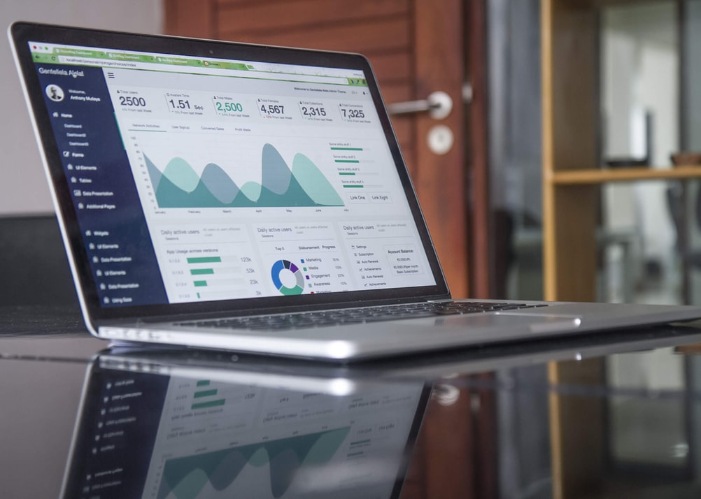8 KPIs that will up your blogging game
There are currently 570 million blogs (and growing) on the internet right now. But you can still start your new business blog today and generate limitless ROIs. That is, if you research your online competitors, create targeted content, and market it like a boss.
But once your blogs are up and running, how do you know if they are helping your website? If your answer is the number of pageviews, regular readers, backlinks, or shares, you’re on the right track but haven’t gone far enough.
A sure-fire way of tracking your blog performance is to track KPIs specific to the goals you wish to achieve from its content. Read along to find the eight commonly preferred KPIs that offer clear-cut performance insights for blogs across industries.
1. Traffic Sources

(Image source: https://unsplash.com/photos/hpjSkU2UYSU )
As opposed to the general overview of a blog’s traffic, focusing on the various sources of traffic will help you compartmentalize your content for different social mediums. Google Analytics offers a discrete division of a blog’s traffic from all sources which you can track over time.
Not just social media, but you can track your blog traffic for distinct locations to know if it’s reaching the right audience. Knowing which particular domain of topics works well for your target location or social media, you can cater your future blogs and marketing strategies with in-depth content for the same.
2. SERP rankings
If your blog doesn’t rank well on search engines, it won’t reach people beyond your network. Also, as a study has shown that only about 9.37% of all the pages indexed on Google get any traffic, optimizing your blog pages for top SERP ranks is essential for traffic growth.
The primary aim is to optimize your blogs for specific keywords and high-frequency words (HFW). And if your content is good enough, it may eventually appear in the ‘People Also Ask’ (PAA) snippets which are often referred to as the ‘#0 results.’
3. Page Optimization Scores
The quality and experience your content offers to the user directly affect your SERP rankings. There are two essential scores you will have to track here: Core Web Vitals and content optimization.
As you frequently update your blog posts with graphics and paragraphs, it affects the loading speed, interactivity, and visual stability, while the correctness, formatting, and word use affect content quality.
4. Conversions rate
A valuable blog is not the one that brings in more likes and comments but the one that creates the most conversions.
Conversions don’t necessarily have to mean a product transaction or an appointment booking; they can be any action that you want your readers to take in a specific blog, like filling a form, taking a survey, or checking out a product. These are also referred to as micro-conversions.
Knowing which blogs and call-to-action content actually lead to more conversions will help you rebuild your highly viewed blogs to also be transactional.
5. Users vs. Sessions
If your blog contains truly valuable information that readers would refer to overtime, they are bound to come back. So while you focus on the increase in users for your new blogs, you should also be tracking the sessions of the old ones.
Many business bloggers often misread the total ‘Users’ and ‘Sessions’ of Google Analytics. So to clarify, ‘Users’ are the new unique visitors on the blog, while ‘Sessions’ indicates the total number of times the blog was visited, as one user can visit a blog multiple times. Healthy growth in both factors proves an increase in user-base and higher content authority.
6. Session durations
You can measure how long it would take to read your blog, but do your readers spend that long reading it? And if they aren’t spending even half of the average read time on your blog, what does it mean?
You might have a kickass headline and banner image to lure them in, but short session durations mean that they aren’t going through the whole content. It means that your readers don’t find the information they seek in your content. This will ultimately reduce your CTA engagement and conversions.
7. Returning users
For any business, an increase in new customers is a sign of good brand image, but an increase in regularly returning customers is a sign of brand trust. The same applies to your website. A study also proves that returning users have a 75% higher chance of making purchases than new users.
If your content creation strategy is on the mark, your blogs should be getting returning visitors. This would potentially increase the social media shares and backlinks to your blogs as well. While Google Analytics offers a clear pie chart of new visitors versus returning visitors, another matric that indirectly adds to this pool is the direct traffic, which you must track simultaneously.
8. Social shares

(Image source: https://unsplash.com/photos/tmrmcEURULg)
People want to share valuable content with their friends and followers. So the shares counter on your blogs suggests how valuable your content is to your audience.
If your blogs aren’t seeing an increase in shares, you need to rethink the topics your blogs usually cover. Another reason that might be preventing users from sharing your content is the placement of the share buttons and the counter. If the social sharing icons aren’t noticeable, the readers won’t be instigated to share the blog.
Takeaway
Tracking the right KPIs to revive your content strategy while delivering quality content that suits your audience is the only way to make the most out of your blogs. And the smarter way to go about it is to choose a blogging platform that takes care of your content and performance under the same tab. Superblog is the first of its kind blogging platform that also takes care of your page speed, SEO, high-quality hosting, and design performance during the editing process. Simply put, it is a CMS that also optimizes your blog performance for the same cost. Wanna give it a try? You can try it for free!
References:
https://getcodeless.com/blog-kpis/
https://neilpatel.com/blog/7-important-metrics-track-contents-success/
https://firstpagesage.com/seo-blog/corporate-blog-metrics-what-success-looks-like-fc/
